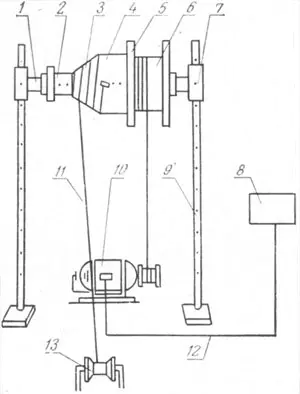Friends, as you already know, exercise machines are now used not only in fitness and bodybuilding. They have long been adopted by representatives of almost all sports disciplines, except for checkers and chess, of course. Although the smart bespectacled people also have their own training simulators and other methodological devices...
We continue to study technical means in sports, and in this review we will consider the design of another original training device for training modern athletes. This training device is designed to develop physical strength with yielding resistance. And it is successfully used by coaches and their students in a wide range of athletics disciplines.
The use of this device will allow you to control the development of force, taking into account its manifestation in the speed of movement, and make adjustments in case of inconsistency in the development of one of the motor qualities (speed or strength). The device is intended for track and field athletes, but it can be used by athletes of other sports.
We study technical means from the arsenal of an athlete.
The main parts of the installation (see figure) are: shaft 5, which has a cylindrical configuration of two different diameters at the ends and a middle (between them) conical part with grooved thread 3 and holes 2 applied along its entire length; winch (drum) 6; mount 7; axis 1; cable 9; electric motor 10 with block 12; control panel 8; cord 11; video 13; pin 4.
Carrying out all kinds of athletics exercises using this training device, as soon as the movement begins, the cord (connected to the hand of the thrower or shot putter, to the sprinter’s belt) is unwound from the drum, as a result of which the shaft is set into rotational motion. At the same time, a cable connected to an electric motor (or load) is wound around the winch. If the cable is connected to a load, the latter rises, but if the cable is connected to an electric motor, then it unwinds from the block, thereby causing the block to rotate counteracting the electric motor.
The difference between the final and initial resistance under conditions of variable intensity is regulated by the size of the load (the difference is directly proportional to the size of the load) or from the control panel if an electric motor is used instead of the load.
In our subsequent articles, we will continue our acquaintance with the technical means of modern sports, newfangled athletics simulators and other educational and methodological instruments and devices. Stay with us.
Post Views: 140


